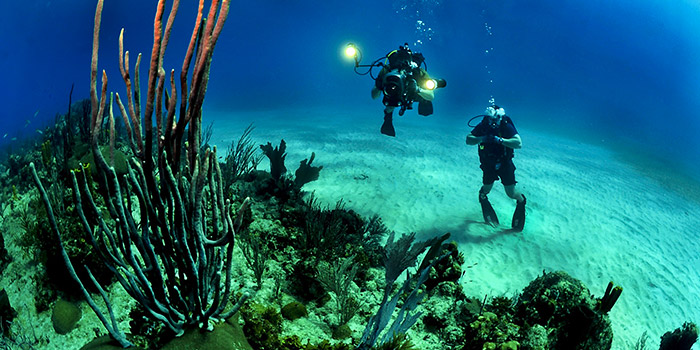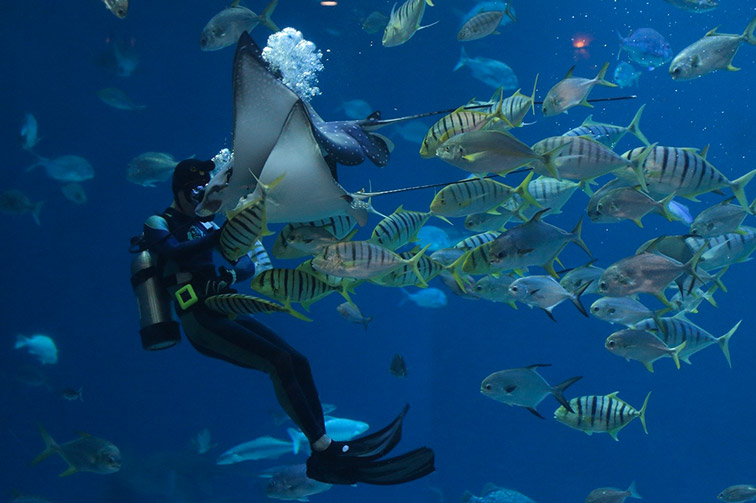Choosing the optimal period to discover the Corsican seabed has a considerable influence on the quality of the experience. Between water temperature, visibility and crowds, there are many factors to consider.
The best periods according to site
The diving season in Haute-Corse generally runs from April to November, with optimal conditions from June to September, depending on the region.
For sites on the west coast, including Calvi, Galeria and the the Scandola reserveThe ideal period is between June and October. During these months, water temperatures fluctuate between 20 and 26°C. visibility up to 30 metres horizontally. The westerly wind, sometimes present at the beginning of the season, tends to diminish in intensity during the summer, offering milder sea conditions.
The sites on Cap Corse, which are more exposed to northerly winds, are generally more pleasant to explore between July and September, when weather conditions are more stable. The east coast, on the other hand, benefits from relative protection from the prevailing winds, and can offer acceptable diving conditions even at the start of the season (April-May) or during the summer. late autumn (October-November).
It should be noted that visitor numbers vary considerably according to the season. The high season (July-August) sees a large attendanceThis is particularly true of emblematic sites such as the B17 wreck and the Scandola reserve. June and September offer an excellent compromise between favorable conditions and moderate visitor numbers.
For example, a study carried out by the the Parc Naturel Marin du Cap Corse et de l’Agriate in 2024 reveals that diving pressure on certain emblematic sites can be up to four times greater in August than in June, for the same conditions of visibility and temperature conditions.
Water temperature and visibility by month
The underwater conditions evolve significantly over the months, directly influencing the quality of the diving experience in Haute-Corse.
In spring (April-May), water temperatures fluctuate between 15°C and 18°C, requiring a thick wetsuit (7mm) for acceptable thermal comfort. acceptable thermal comfort. On the other hand, this period often offers exceptional visibility in excess of 30 metres horizontally. Marine fauna is particularly active during the breeding season, with the presence of many migratory species.
Summer (June-September) represents the peak of the season with water temperatures reaching 23-26°C at the surface and rarely less than 17°C at depth. A shorty or 3mm wetsuit is generally sufficient for shallow dives. Visibility remains excellent as long as weather conditions are stable, but can temporarily deteriorate after the rare summer thunderstorms.
Autumn (October-November) is a particularly popular period for underwater photographers and and experienced divers. The water, still relatively warm (18-23°C), offers remarkable clarity. What’s more, the drop in tourist numbers means that you can discover the most popular sites in a more serene atmosphere.
In 2025, several diving centers developed specific offers for off-season periods, combining attractive rates and programs adapted to the specific conditions of these months. These formulas make it possible to take full advantage of these less busy periods while minimizing the potential inconveniences associated with more variable weather conditions.
Impact of weather conditions
The weather conditions play a decisive role in the Haute-Corse diving scene. The geographical configuration of the island, with its coasts exposed to different prevailing winds, creates a diversity of situations to optimize your experience.
Wind is the meteorological factor the most limiting for diving. The Tramontane (north-westerly wind) can make access to exposed sites on Cap Corse and the west coast difficult. The Libeccio (westerly wind) mainly affects the west coast, while the Grégale (north-easterly wind) affects the east coast. Fortunately, whatever the wind direction, there are always sheltered sites accessible by car. Upper Corsica.
Dive centers keep a close eye weather forecasts and adapt their programs accordingly. By 2025, most of them will be using specialized applications that combine weather, tide and sea state data to optimize their choice of route. sites daily.
Applications such as Windy or Dive Weatherparticularly popular among divers in 2025, provide specific forecasts for diving, including estimated visibility, water temperature and current direction. These tools enable divers to plan their outings with even greater precision.
Furthermore, thunderstorms, which are rare in summer, can temporarily impair underwater visibility. underwater visibility due to terrestrial runoff. These phenomena are generally short-lived, as water clarity is quickly restored by sea currents, which efficiently renew the water’s quality. coastal water bodies.













